Shelter
Note: This page is frequently updated. It is by no means complete. These resources provide comprehensive updates.
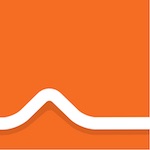
ADIFF is a new humanitarian fashion start-up that provides customers with innovative and exclusive products, addresses global issues through design, and performs large scale donations. The brand creates all gender and one-size transformable products that are equally beautiful and functional. The multipurpose jackets are practical, durable, waterproof, and prepared to be worn in numerous environments. Products are solution-based, meaning every item is designed to address a need, to avoid useless saturation of the industry.
Originally designed to assist refugees, the positive response to the collection and consumer desire pushed for the products to be released for purchase as well. Founder Angela Luna saw this as an opportunity to give back and generate revenue that could be used for donations to refugees. Based on a donation-driven business model, the goal is to repurpose the money that comes into the fashion industry and redirect it towards supporting humanitarian initiatives. With any purchase from the brand, a portion of profit will go towards donating the most needed items to refugees. This way, we can be sure that we are getting these innovative products to the people who need them most, and creating widespread awareness about the issue itself.
Facebook
Website
Video of jacket that turns into a tent
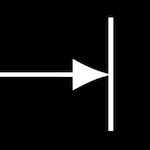
Architecture for Humanity is a nonprofit design services firm founded in 1999. We are building a more sustainable future through the power of professional design. By tapping a network of more than 75,000 professionals willing to lend time and expertise to help those who would not otherwise be able to afford their services, we bring design, construction and development services where they are most critically needed.
Facebook
Website
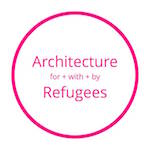
Architecture for Refugees is an open source online platform which collects and shares questions, problems, ideas and solutions dealing with the architectural aspects of the current refugee crisis on the European and global scale. In our modern society information and the access to knowledge are key values. Creating an open source pool of information and knowledge could enhance the collaborative work between activists, refugees, professionals and politicians. As a result of the collaborative work, organised and fast answers could be given to the shelter- and infrastructural problems of the refugee crisis.
Currently, we use our Facebook “Architecture for Refugees” public page and public group to collect and share information. We are looking for short- and long-term solutions on local and global level. It is our aim to develop the accessibility of the platform: a user friendly, multilingual homepage which would serve as the optimal pool for sharing and collecting.
Facebook
Website
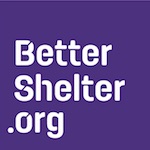
Better Shelter
Anyone who has ever been camping knows that a tent does not provide the best shelter in rain, wind or freezing temperatures. Nor is a tent ideal when the sun is beating down, the air is standing still and the thermometer is pushing 30 degrees celsius.
Add to this a harrowing life situation, a sense of personal chaos and insecurity, 25,000 neighbors living in a cramped area where you can hear every sound, poor sanitary conditions, a lack of food and no idea as to how many months or years you may be forced to stay. For the millions of people currently living in refugee camps around the world, this is reality.
The vulnerable physical and psychological position of refugees could be improved if they had somewhere to call home, however humble that home may be. A house rather than a tent. Tents offer a good solution for putting a roof over people’s heads quickly in a disaster. However, tents only last for six months, while refugees often spend several years – sometimes generations – in camps. But is it possible to manufacture, ship and assemble a refugee shelter quickly at a reasonable price?
Despite the rapid development of materials, technology and production in the private during the last decades, little of this knowledge has been transferred into the humanitarian sector when it comes to shelter. The vulnerable physical and psychological position of refugees could be improved if they had somewhere to call home, however humble that home may be. A better shelter.
In 2013, after years of research and development, the prototypes were finally completed and tests in real conditions began. First up was Dollo Ado, a camp for Somalian refugees in Ethiopia. The results of the test were encouraging. The shelters held up and the refugees gave them a positive review. On June 20, 2013 – the UN World Refugee Day – the IKEA Foundation and the UNHCR publically announced their partnership. The news received an enormous response from the media and other groups interested in refugee issues.
Better Shelter aims to be the leading innovation company in scalable solutions for the world’s refugees. The goal is to use engineering to provide refugees with better conditions for physical and mental survival.
This not only includes shelters, but also other products currently in the planning stage, as well as a comprehensive concept that would see Better Shelter assume consultancy for everything from evaluating potential sites for refugee camps and planning their development to establishing production in close proximity to refugee areas and providing technical training for assembly and maintenance.
Facebook
Website

Healthy Housing for the Displaced
Working with colleagues at Princess Sumaya University for Technology (Jordan), German Jordanian University (Jordan), and Mersin University (Turkey), the interdisciplinary team at [the University of] Bath [in the UK] will aim to improve the living conditions in refugee camps by designing low cost and easy to construct housing that will moderate extremes of temperature and ensure the privacy, comfort and dignity of residents.
The three-year project will conduct the largest ever global study investigating thermal, air quality and social conditions in camps housing displaced people. The views of camp occupants and aid agencies such as UNHCR (United Nations High Commissioner for Refugees) on the enhancement of housing and key social issues will be sought as a core element of this study.
Aid agencies provide invaluable support and resources for large numbers of displaced people inside camps. However, according to a recent pilot study conducted by the research team, shelter design can create specific problems for inhabitants increasing, in turn, the demands upon humanitarian organisations. For example, health can be undermined when poorly-insulated shelters fail to mediate extremes of temperature and design that doesn’t meet the need for privacy and security can harm psychosocial wellbeing.
With these findings in view, the researchers will utilize building physics to inform the design of shelters using novel combinations of conventional and non-conventional materials to ensure the shelters naturally stay warm in winter and cool in summer.
Twenty possible shelter designs will be created, with six designs constructed in the UK to test construction times, and thermally tested in a climate chamber at the University’s Building Research Park in Swindon. The most promising of these designs will then be transported to Jordan to test in local conditions and obtain the feedback of camp occupants and aid agencies.
Facebook
Website
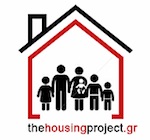
The Housing Project
The project’s objective is to provide 1,200 reception places for asylum seekers currently at Mazaraki temporary refugee camp, in Cherso, Kilkis, eligible to participate in the Relocation Scheme and/or for those who have applied for asylum in Greece, envisaging at the same time to ensure that
(a) no segregation effect will take place,
(b) all refugees will be hosted with safety and dignity,
(c) local communities will be functionally informed and involved in integration policies
(d) all potential social tensions will be confronted in an effective and sustainable way.
Accommodation will be provided by rental of vacant houses while, beneficiaries will receive basic practical provisions (food vouchers, hygiene allowances, transportation etc). Additional services to include medical services, social counselling and legal aid.
Facebook
Website
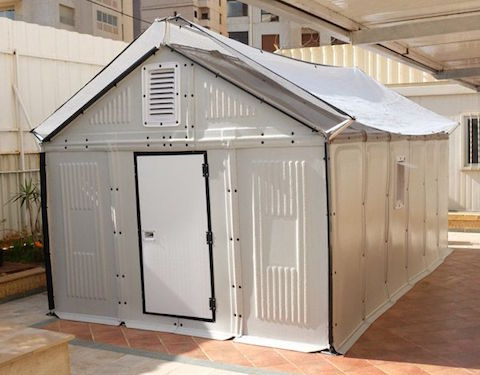
Ikea's Better Shelter
"Better Shelter," the next-generation refugee dwelling from the Ikea Foundation, the United Nations High Commissioner for Refugees (UNHCR) and a group of Swedish designers, has come a long way. Since its inception in 2013, prototypes of the portable flatpack structure have been tested by 40 refugee families in Iraq and Ethiopia. Last year, it won an honor at the Swedish Design Awards and was called "one of the most important design developments of the past decade." And as of yesterday, after it made its debut at a humanitarian aid conference in Dubai, the "Better Shelter" is officially available for purchase for the first time. The UNCHR has already ordered 10,000 of them, which means the shed-like dwellings will go into production right away, with a goal of housing families in need as early as this summer.
Each 188-square-foot structure accommodates five people and can be assembled by four people in approximately four to eight hours without additional equipment. With its lightweight polymer panels and thermal insulation, Better Shelter is supposed to be safer and more durable than the canvas or plastic tents traditionally used by refugees. The shelter also comes with a solar panel, which can illuminate the interior lamp. In an email, a rep from BetterShelter.org (the social enterprise that will be managing the product's development and production) writes that each Better Shelter currently costs $1,150 including the PV/lamp system, but that price is expected to drop below $1,000 in the next two years as order volumes increase.
Curbed article - December 11, 2014
Better Shelter Assembly in Five Minutes - YouTube
Why IKEA's Award-Winning Refugee Shelters Need a Redesign - May 19, 2017

More Than Shelters offers innovative architecture and social design concepts for humanitarian needs. The goal is to create a temporary “home” for people in distress and to give them the opportunity to help themselves. Being a social business, the aim is to not make profits in the first place, but to maximize efficiency and dignity in humanitarian actions.
Since its foundation in 2012, the organization has focused mainly on the design and marketing of DOMO, a modular emergency shelter system. DOMO’s design takes in account the diverse range of geographical and climatic conditions as well as culture-specific needs of populations affected in emergencies. Like a “building kit,” the transitional shelter system grows with the demands of its users and can be transformed gradually towards a more stable long-term solution. This ability to be situational adjustable and to grow with the actual demands makes DOMO innovatively stand out from traditional tents and containers.
Facebook
Website
Last updated September 18, 2017
Please send suggestions to Dianne Walker.
Back to home







